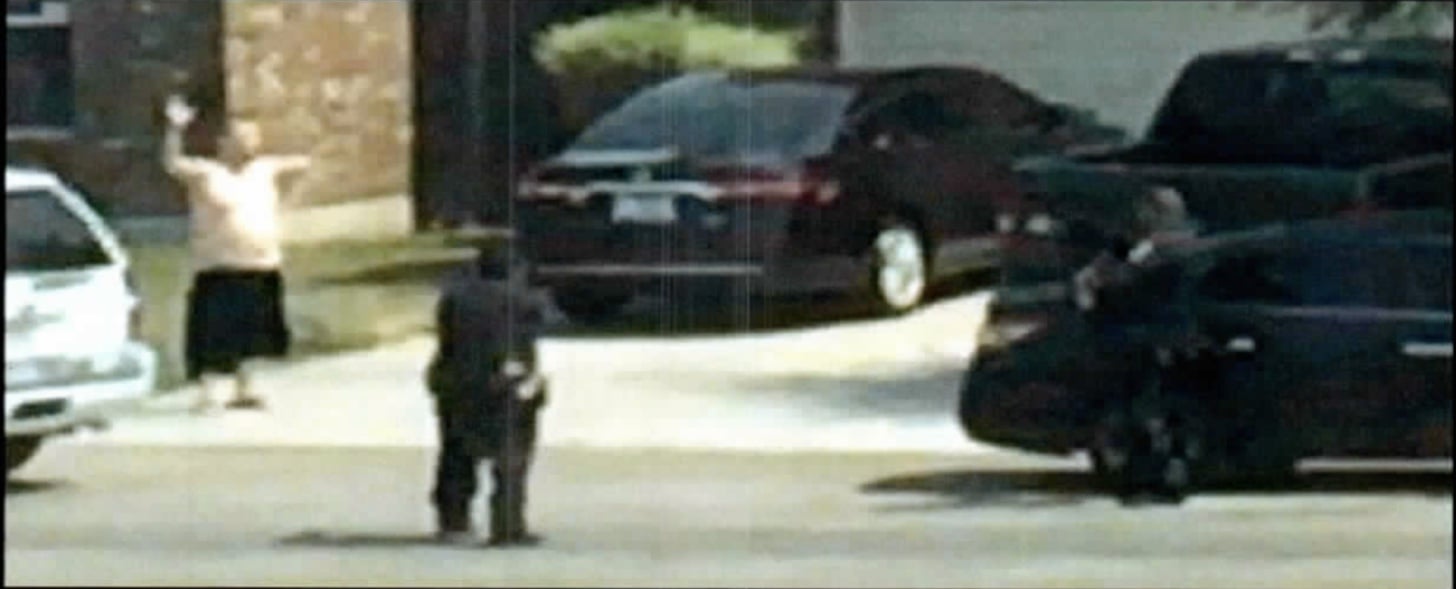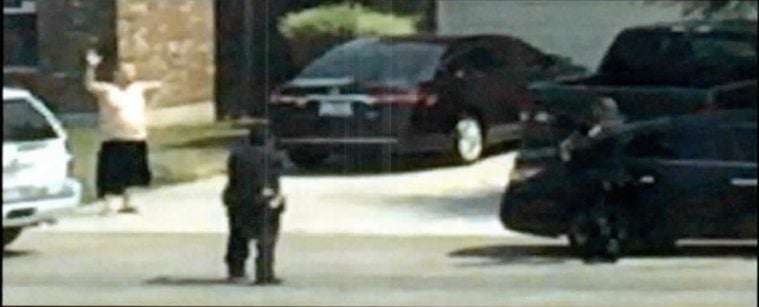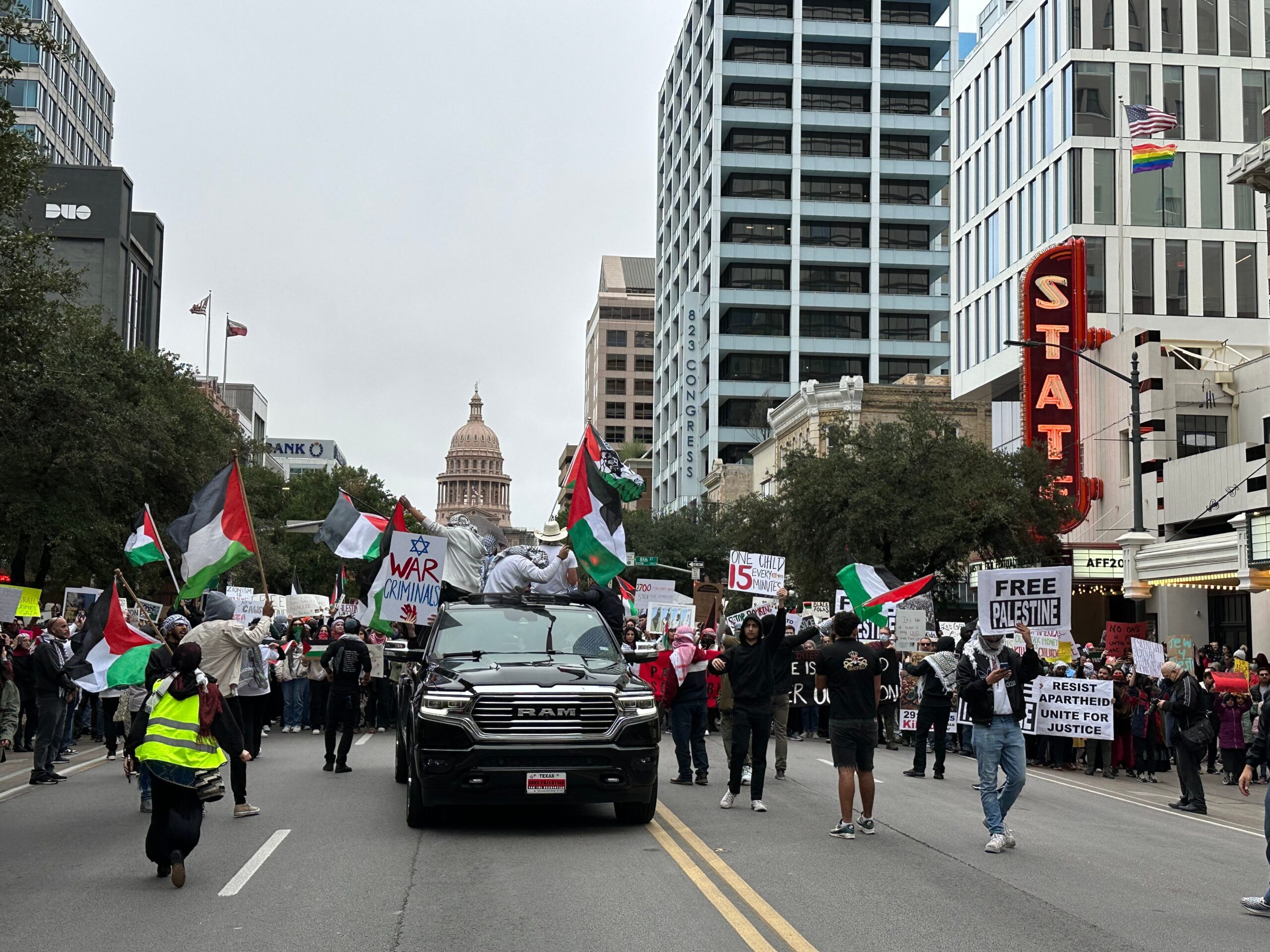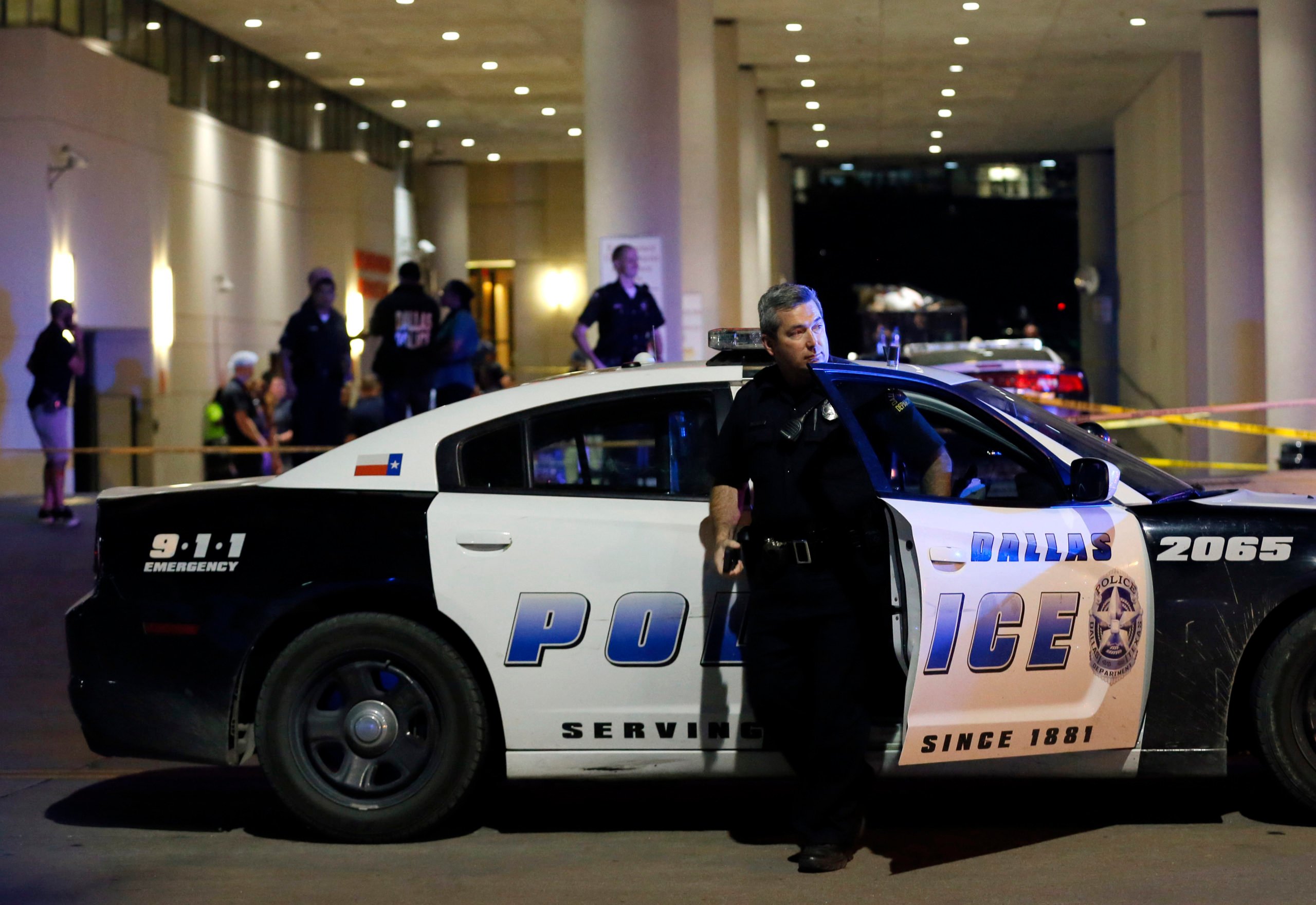
Meet the Expert Who Helps Texas Cops Justify Extreme Behavior
Gilbert Flores’ hands were raised when two Bexar County deputies shot and killed him. A former cop who’s trained thousands of state police officers explains why he thinks that’s OK.


Gilbert Flores was already taunting the cops when his mother called 911 the morning of August 28, 2015.
“My son, he’s gone crazy, I think he’s on drugs, I’m not sure but he’s crazy,” she told the dispatcher. She’d heard a woman screaming inside the house that morning, ran to Flores’ room and saw he’d bloodied his wife’s face in a rage. After he began cursing God and ripping up a Bible, she told her son the devil was living inside him. According to court records, the dispatcher could hear Flores shouting over his mother: “I’m going to suicide by cop, so bring a SWAT team, or whoever is going to be ready to pull the trigger because I’m going to die today.” Then he grabbed a knife.
Following a chaotic 12-minute struggle, two Bexar County sheriff’s deputies granted his wish. In sworn statements to investigators after the shooting, they said Flores “started advancing” toward them when they shot. Neither of their statements mentioned that Flores had his hands above his head. Bystander video that aired on local TV later that night, which showed his hands raised in apparent surrender, quickly went viral.
Flores’ surviving family filed a federal civil rights lawsuit against the county and deputies two weeks after his death. In their defense, the deputies are now arguing that they were justified in shooting Flores because he was still an imminent threat. To make the case, they’re relying on Albert Rodriguez, the former director of the Texas Department of Public Safety (DPS) training academy, who this summer penned a report explaining why cops can rightfully shoot and kill someone, even if their hands are clearly raised.
In his report, Rodriguez writes that it’s “extremely naïve” to think Flores, even with his hands raised and standing at least 20 feet away, wasn’t an imminent threat at the moment officers shot and killed him.
Rodriguez is a familiar figure in police shooting cases. By his own estimate, he trained tens of thousands of the state’s licensed peace officers during his 16-year stint as DPS training academy director. According to the Texas Alcoholic Beverage Commission, where he’s worked since retiring from DPS in 2009, he’s “investigated and/or served as an expert in over 250 police officer involved shootings.”
As I’ve written before, police frequently turn to Rodriguez to justify extreme police behavior.
For example, he was involved in defending two Harris County sheriff’s deputies who, in 2002, chased down a man videotaping a raid in his apartment complex, busted down his door, and roughed up and arrested some people inside before deleting the video. Rodriguez insisted the officers’ actions were justified because they thought the men would somehow “retaliate” against them with the footage.
The Houston federal judge on the case, Kenneth Hoyt, delivered a stinging rebuke of Rodriguez’s work, saying his notion of what constitutes justifiable police behavior “contravenes well-settled legal theories” and promotes “lawlessness.” He also excoriated Rodriguez after concluding that he’d coached the deputies to make sure their under-oath testimony would support his expert opinions in the case.

Here’s how Hoyt judged Rodriguez’s trustworthiness in that case: “It is like the cuttlefish squirting out ink in an effort to escape. Rodriguez’s testimony is just another stream of endless, irrepressible repetition of half-truths.”
Still, Rodriguez continues to testify in cases where people have accused officers of excessive force, such as Bellaire police sergeant Jeffrey Cotton, who on New Year’s Eve 2008 shot Robbie Tolan, an unarmed black man, in his parents’ front yard.
Cotton claimed he fired three bullets because Tolan rose to his feet, reached for his waistband and started to charge the officer. Tolan says he simply lifted his torso off the ground to shout “Get your fucking hands off my mother” when he saw Cotton shoving his mom. Experts hired by Tolan’s family said the downward trajectory of the bullet through his body shows Tolan was still on the ground when Cotton shot him. But Rodriguez would later write that his body position didn’t matter. Lifting up from the ground and yelling at a cop was, in the heat of the moment, indistinguishable from someone jumping to their feet and charging at an officer with a hand at their waistband. Or, as Rodriguez put it, “it equates to the same.”
Months later, a suburban Houston cop gunned down an unarmed teenager named Aaron Hobart inside his home, in front of parents who’d only called the police for help transporting their agitated, mentally ill son to the hospital. When the family sued, the police department summoned Rodriguez to explain why the officer’s actions were “consistent with established law-enforcement training.” He did the same for the off-duty Conroe officer who in July 2013 chased an unarmed teenager into the woods and put a bullet in the back of his head. The teenager’s crime: stealing $50 worth of iPad cases from a nearby Walmart.
In depositions recently filed in court, the Bexar County deputies who shot Gilbert Flores two summers ago said they were following supervisors’ orders to “by all means stop him.” During the intense, 12-minute struggle that preceded the shooting, Flores tried to stab one deputy, who blocked the attack with a riot shield, according to court records. Deputies had already tried to use a Taser on Flores, but he’d blocked the prongs with a metal chair he wielded as a shield. At one point, one of the deputies actually shot at Flores to keep him from re-entering the house but missed.
In depositions filed in court, both deputies testified they’d talked moments before shooting Flores and agreed on “ending this.” Video appears to show one deputy turning to face the other before they fire, almost simultaneously. That’s why lawyers for the Flores family argue that the officers’ own statements reveal there wasn’t an immediate threat when they shot. While the deputies guessed they were 6 to 8 feet away from Flores, court records show at least 20 feet separated the men.
“At the moment deadly force was used, there was no imminent threat to justify it,” the plaintiffs wrote in a court filing last month.
But Rodriguez says that you have to think like a cop to understand why, even with his hands up and far away, the deputies were justified in shooting Flores. In his report, he makes much of the fact that Flores “transferr[ed] the knife from his right hand to his left” in those final moments before he raised his hands above his head. He calls it a clear “pre-attack indicator” and gives a long treatise explaining why “Experienced law enforcement officers are experts at reading ‘Body Language,’ but not necessarily experts at articulating what they see and/or what they see means to them.”
In the end, he compares the deputies to bullfighters and Flores to a bull that was dangerous, even if it wasn’t charging. Ultimately, like so many things in policing, it boils down to a matter of perception. As Rodriguez writes: “[A] spectator may have that perception, however, there is no question that the bullfighter perceives the bull differently than the spectator.”


